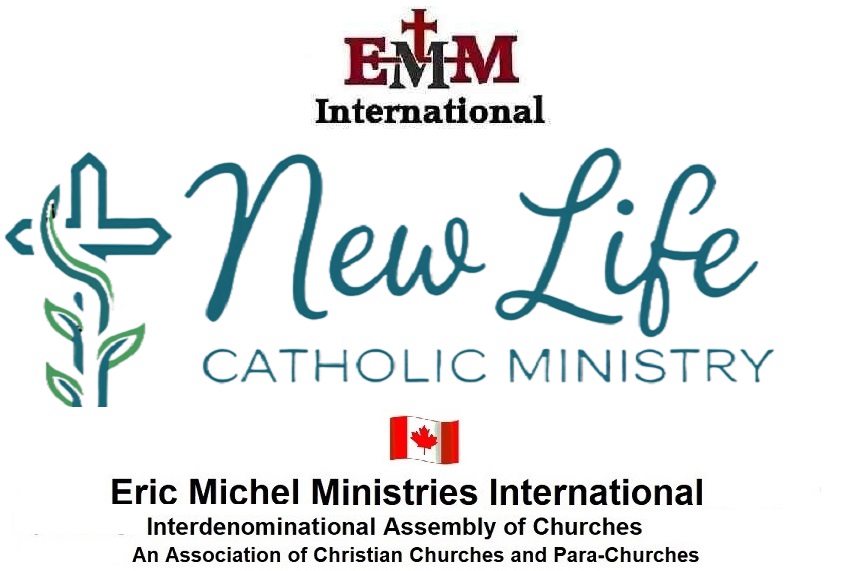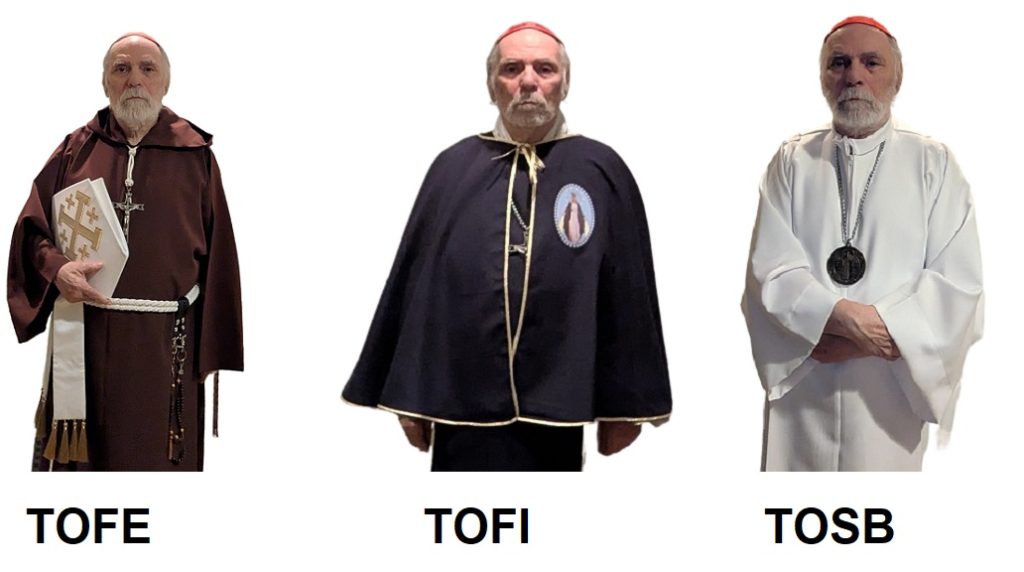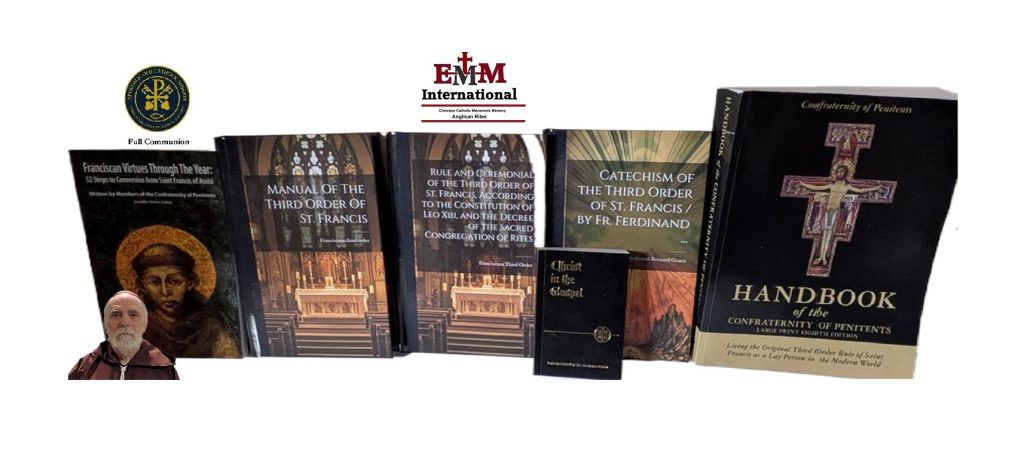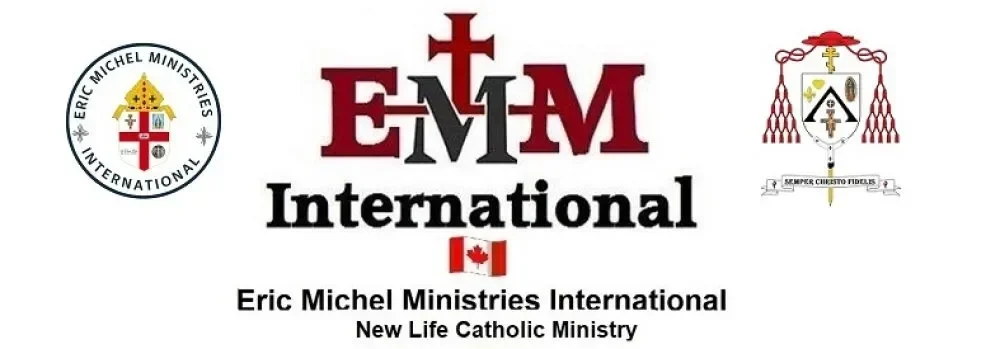The EMMI corporation is of Franciscan inspiration not connected with a mainstream Christian tradition and describing ourselves as ecumenical and dispersed, but Eric Michel is an Affiliate Member of the Confraternity of Penitents (https://www.franciscanthirdorderpenitents.com/cfp-affiliates) and a member of Commission on the Franciscan Intellectual-Spiritual Tradition, St. Bonaventure, NY (https://digitalcollections.franciscantradition.org/) and member of the Franciscains Action Network (https://franciscanaction.org/).
We base our liturgies and rituals on the ex-Mission Episcopate of Saints Francis and Clare, “an autocephalous (self-governing) ecclesial jurisdiction”, sponsors the Order of Lesser Sisters and Brothers (Eric Michel in 2020 https://orderoflessersistersandbrothers.weebly.com/), open to Christians male or female, married, partnered or single, clergy or lay.
The United States Order of Ecumenical Franciscans adopted its Rule on 22 November 1983. The Order of Lesser Sisters and Brothers is a dispersed ecumenical Franciscan community similar to the older Third Order model under which most members live their everyday life in the world. They may be male or female, married, partnered or single, clergy or lay. There is no discrimination of any sort, save as to minimum age.(Facebook: https://www.facebook.com/lessersistersandbrothers)
The Mission Episcopate of Saints Francis and Clare ceased functioning as an autocephalous church and all clergy were amicably relocated.
In order to establish a relationship of supervision and accountability, the Presiding Bishop was accepted into the Contemporary Catholic Church as a bishop, and the MESFC became an autonomous member of that church, still true to the reformed tradition of the Liberal Catholic Church. (https://mesfc.wordpress.com/)



Third Order of Franciscans of the Eucharist (OFS)
Third Order of Franciscans of the Immaculate (OFS)
The term third order signifies, in general, lay members of Christian religious orders, who do not necessarily live in a religious community such as a monastery or a nunnery, and yet can claim to wear the religious habit and participate in the good works of a great order. Roman Catholicism, Lutheranism and Anglicanism all recognize third orders.
Third orders were a 12th-century adaptation of the medieval monastic confraternities. Members of third orders are known as tertiaries (Latin tertiarii, from tertius, “third”). In some cases, they may belong to a religious institute (a “congregation”) that is called a “third order regular”.
Roman Catholic canon law states:
Associations whose members share in the spirit of some religious institute while in secular life, lead an apostolic life, and strive for Christian perfection under the higher direction of the same institute are called third orders or some other appropriate name
Members of third orders are thus either (a) regulars, living in common under a religious rule of life, or (b) seculars, living in the world. The regulars take the three canonical religious vows; the seculars make promises, which are not considered binding under pain of sin, as are the vows of religious institutes, or in some cases may take private vows[ of obedience and chastity or in some cases even poverty, chastity and obedience (all according to their lay state). Their link with a religious institute is what distinguishes them from members of other “associations of the Christian faithful” and entitles their associations to be “called third orders or some other appropriate name”.
Any Roman Catholic, Lutheran or Anglican may join a Third Order of their respective religious tradition. The laying aside of the distinctive sign or prayers for any space of time does not in itself put an end to membership with a Third Order, but the deliberate wish to dissociate oneself from it is sufficient to produce that effect (S. Cong. Indulg., 31 January 1893).
Eric Michel Ministries International orders, in the model of the Company of Jesus, is an unusual order
it is a deliberate mix of the Franciscan and Benedictine rules, forming a “hybrid” community.

A Third Order of Saint Francis, with the same name as the Catholic third order, exists in the Anglican Communion, alongside the Anglican Society of St Francis and Community of St Francis (First Order Franciscans), and the Community of St. Clare (Anglican Second Order of Franciscan Sisters).
Third Order Franciscans live as a dispersed community, which means that they meet together regularly for prayer, study, and fellowship, but live individually on a day-to-day basis. Some live alone, others as part of a family. Members may be single or married, ordained or lay, and male or female. They do not take the traditional three-fold vow of poverty, chastity, and obedience, but they do enter into a binding promise and live by a rule of life based upon Francis of Assisi’s original Third Order rule.
Whilst the Society of St Francis (First, Second and Third Orders), operating worldwide, is widely recognized as the principal branch of Franciscanism within the Anglican Communion, there are other religious orders following the Franciscan rule, and living the Franciscan life.
